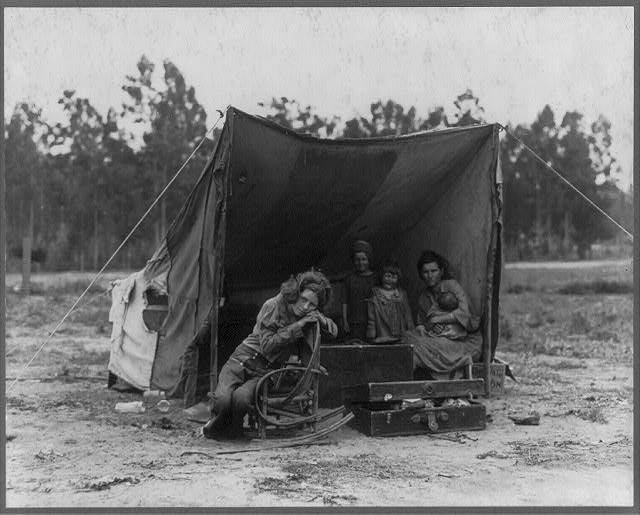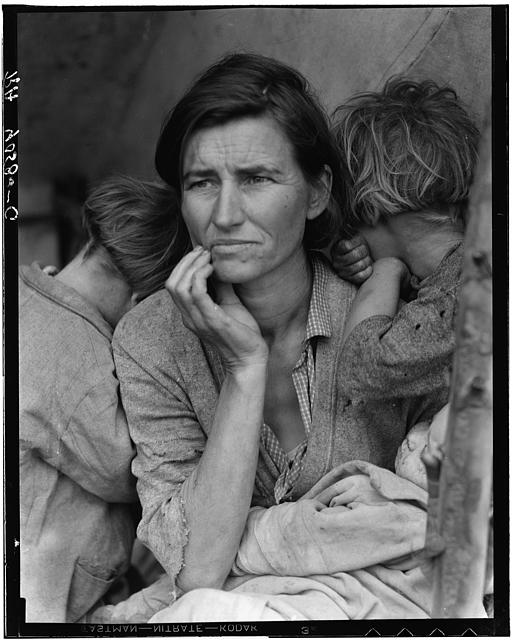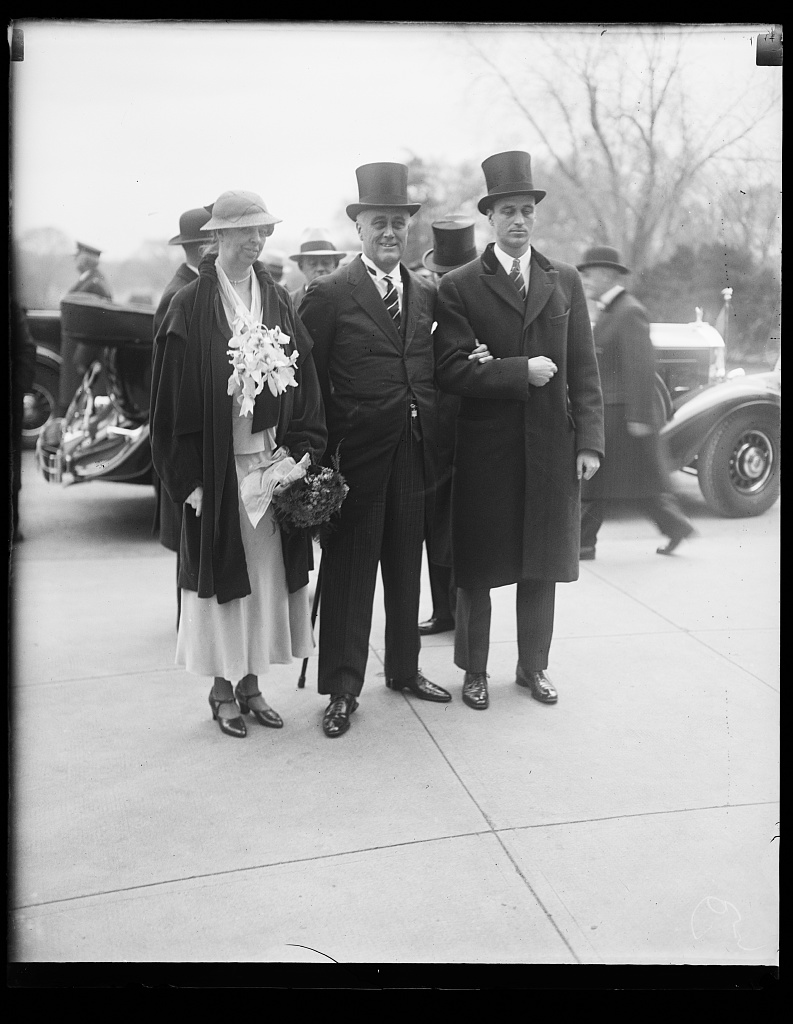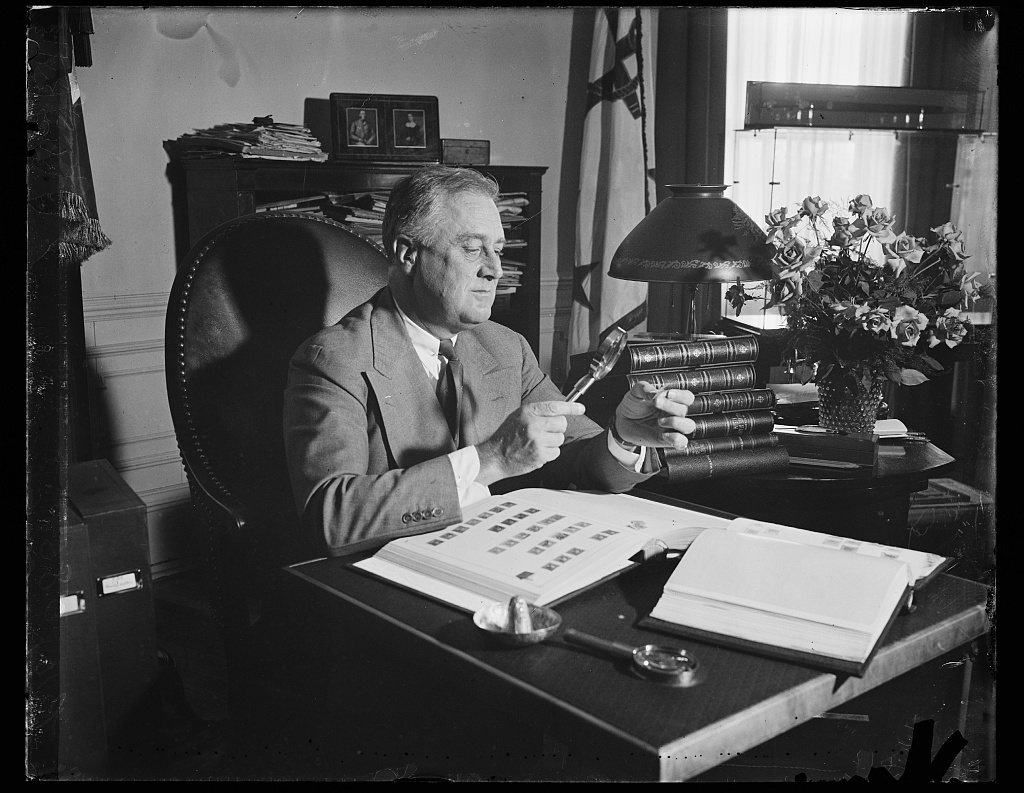W10 LA-IC
Purpose
Examine ways to interpret the content of visual images
Learning Activity
Visual Literacy
Images and photographs have a language and communication techniques unique to the medium.
21st century media:
- question the author
- articulate what is represented
- examine how the information has been represented
- infer what has been included and excluded and why.
Angle
- The vantage point or direction from which the artist photographs the
subject.
Framing
- By deciding where the edges of the image will be, the photograph
determines what you will (and will not) see—whether the subject will fill the
frame and appear “close up” or will be seen at a distance as part of a larger
context.
Destitute Pea Pickers in California
Light
- Light is one of the most powerful tools of the photographer. The
manipulation of light and dark and the sharpness of contrast between light
and dark contribute to the mood a photograph conveys.
Focus: The clarity or blurriness of the image. The range between the nearest
and farthest things that appear in clear focus defines the photograph’s depth
of field.
National Geographic 100 Best Pictures
Composition
- What is in the foreground? Are the elements arranged in
any particular pattern? Do you see any geometric shapes? Are the lines of
the photograph straight or curving, thick or thin? Do any visual elements
repeat? Is the visual weight of the photograph balanced: on each side? top to
bottom? diagonally? (Adapted from Susan Schekel, personal communication,
Stony Brook University)
Margaret Bourke-White
What has been excluded and why?
Franklin Roosevelt
- http://hdl.loc.gov/loc.pnp/hec.40759
- http://hdl.loc.gov/loc.pnp/hec.40758
- http://hdl.loc.gov/loc.pnp/npcc.28260
- http://hdl.loc.gov/loc.pnp/hec.46900
- http://hdl.loc.gov/loc.pnp/highsm.17901
What is the artist’s purpose?
Oxbow, Thomas Cole
What’s Next?
We will examine ways to organize your final project by thinking visually. Next learning activity.








